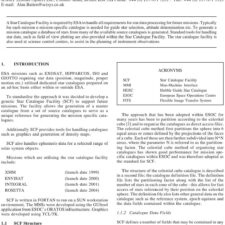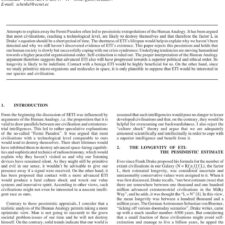Einstein, Mach’s Principle And the Unification Of Gravity And Inertia
£5.00
J. F. Woodward (2017), JBIS, 70, pp.354-364
Refcode: 2017.70.354
Abstract:
When my colleague Heidi Fearn organized the workshop on advanced propulsion at Aerospace Corporation at the beginning of November, 2017, I had no intention of presenting recent work, as she planned to do that for the two of us. I did not anticipate that any of the other presentations might merit formal comment from me. However, one of the presenters was at pains to explain that inertia is not accounted for in general relativity theory — that one must go to a scalar-tensor theory of the sort developed by Carl Brans and Robert Dicke in the 1960s to account for inertia. Alas, this is wrong. General relativity, notwithstanding that it is not widely appreciated, does correctly account for inertia as part of the gravitational interaction — not just phenomena involving rotation. Linear (translational) motion too. As it turns out, several years ago I was engaged in a lengthy email discussion of just this point with Paul Zielinski and Jack Sarfatti (supplemented by literature finds by Paul and Art Wagner). The earlier part of this then ongoing discussion had informed my treatment of general relativity in my book Making Starships and Stargates: the Science of Interstellar Transport and Absurdly Benign Wormholes (Springer, New York, 2012) and was acknowledged there. The conversation did not stop with the publication of Starships. Eventually, a couple of years later, it did stop, and I prepared an essay that I intended to be part of a second edition of Starships. Springer’s price for doing a second edition, however, was my yielding to them some of the most lucrative royalties for the book. No second edition. But the 2015 essay was available for circulation to several of the workshop participants interested in the role of inertia in general relativity. Since getting gravity and inertia right is essential to figuring out how to get around spacetime quickly, I sent the 2015 version of the essay to those workshop participants. After all, scalar tensor theories were soundly discredited experimentally 40 and more years ago. Wishful thinking will not get anyone out of Earth’s gravity well. Shortly after the essay on inertia in general relativity was finished, I circulated it to a number of friends and colleagues to get their critical comments. In this process, Bruce Camber brought a then recently published monograph by John Stachel1 to my attention. In addition to calling Einstein’s field equations the “inertio-gravitational” field equations, he employed several Einstein quotes on matters addressed here that I was not familiar with — now included below. This essay, edited from its 2015 form circulated at the workshop, recounts Einstein’s evolving views on inertia and how they fit into general relativity, extending the material in chapters 1 and 2 of Starships. As elaborated below, we will see that Einstein’s conviction that inertia and inertial forces are gravitational in origin never wavered after he identified the Equivalence Principle in 1907, notwithstanding that he was willing to abandon “Mach’s principle” when he was challenged by Willem de Sitter shortly after the publication of general relativity theory in 1915. Some important episodes involving inertia after Einstein’s death in 1955 are then considered.





